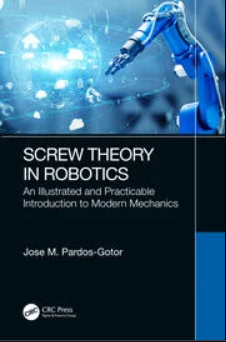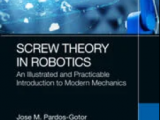Popis
Autors: Jose M. Pardos-Gotor
Publisher:Taylor & Francis Group
Online publication date: 2021
ISBN 978-1-00-048156-3
Screw theory is an effective and efficient method used in robotics applications. This book demonstrates how to implement screw theory, explaining the key fundamentals and real-world applications using a practical and visual approach. An essential tool for those involved in the development of robotics implementations, the book uses case studies to analyze mechatronics. Screw theory offers a significant opportunity to interpret mechanics at a high level, facilitating contemporary geometric techniques in solving common robotics issues. Using these solutions results in an optimized performance in comparison to algebraic and numerical options. Demonstrating techniques such as six-dimensional (6D) vector notation and the Product of Exponentials (POE), the use of screw theory notation reduces the need for complex algebra, which results in simpler code, which is easier to write, comprehend, and debug. The book provides exercises and simulations to demonstrate this with new formulas and algorithms presented to aid the reader in accelerating their learning. By walking the user through the fundamentals of screw theory, and by providing a complete set of examples for the most common robot manipulator architecture, the book delivers an excellent foundation through which to comprehend screw theory developments. The visual approach of the book means it can be used as a self-learning tool for professionals alongside students. It will be of interest to those studying robotics, mechanics, mechanical engineering, and electrical engineering.








